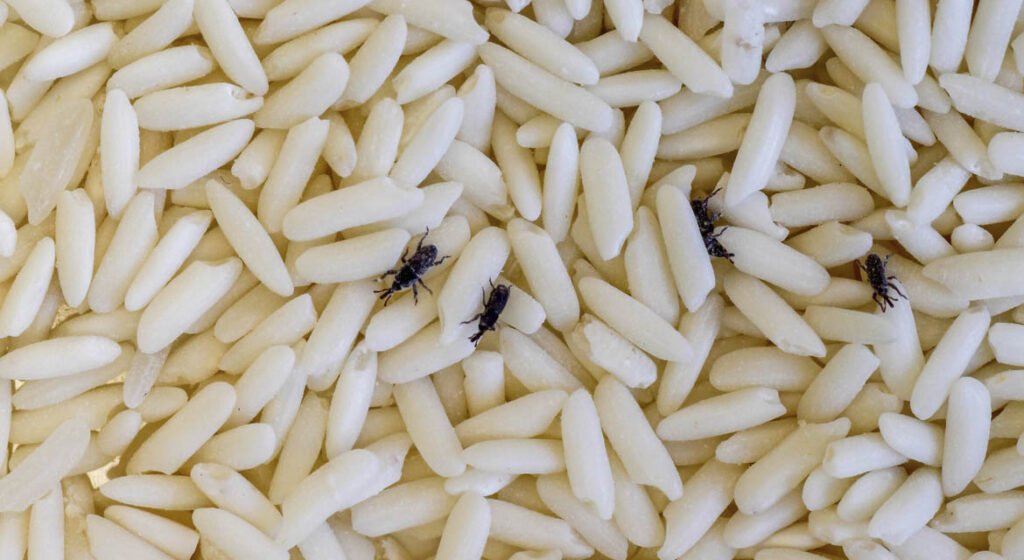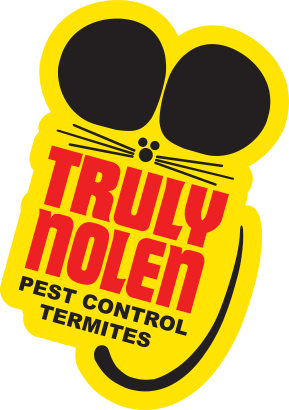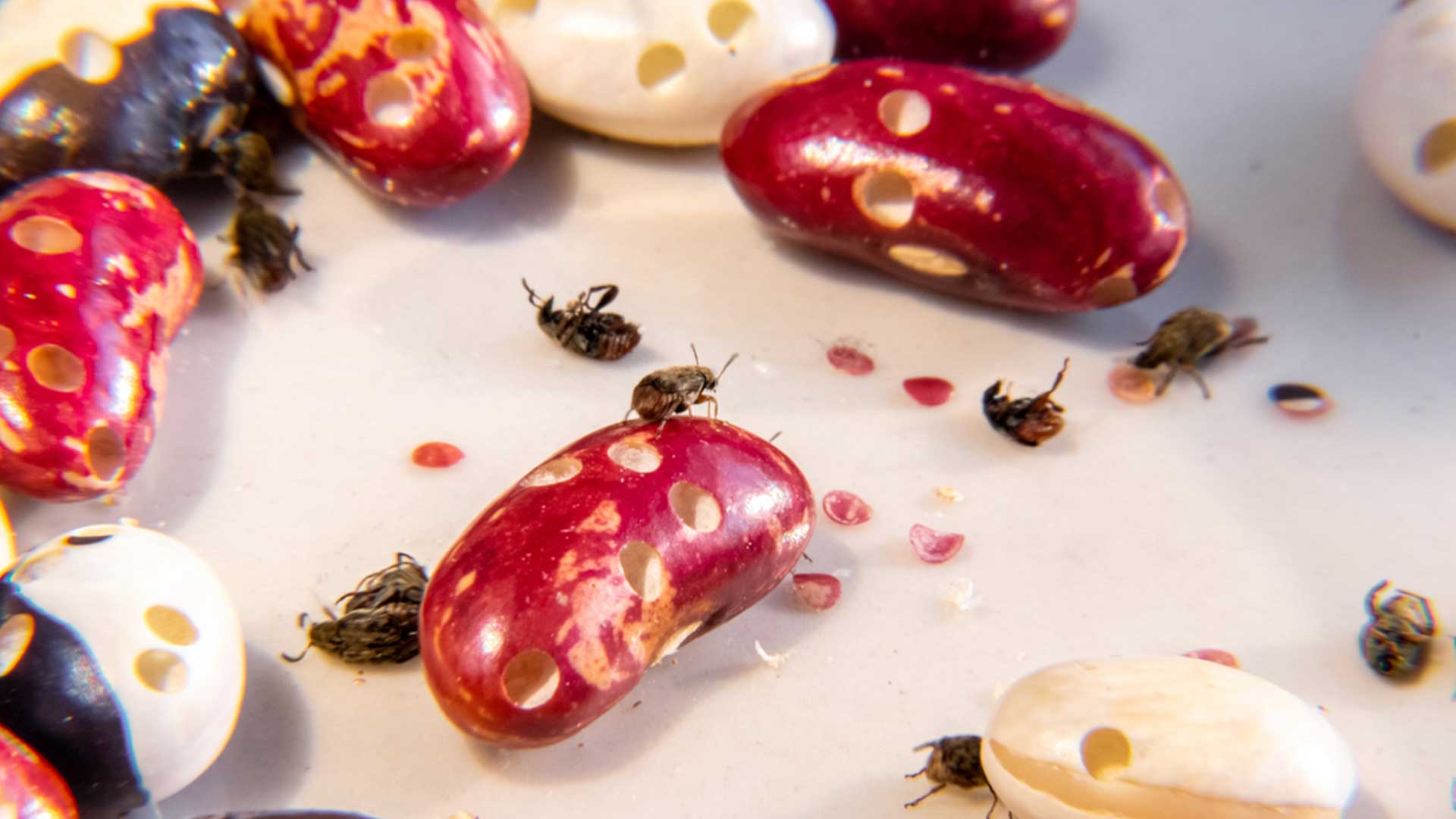
How Do I Get Rid of Weevils in My Kitchen and Pantry?
Curious about how to eliminate weevils? Identify and discard infested items to prevent weevil infestations from spreading in your kitchen and pantry. Thoroughly clean, sanitize, and implement preventive measures such as using airtight containers and maintaining cleanliness to eliminate existing weevils and discourage future infestations. Here are three key points to keep in mind:
- Identify and discard infested items to prevent further spread of weevils in your kitchen and pantry.
- Thoroughly clean and sanitize the affected areas, including cracks and shelves, to eliminate any remaining weevils or eggs.
- Implement preventive measures like using airtight containers, checking expiration dates, and maintaining a clean and dry kitchen to discourage future weevil infestations.
Weevil Removal Overview
Discovering weevils in your kitchen or pantry can be an unwelcome surprise. These small beetles may seem harmless initially, but they can quickly multiply and wreak havoc on your stored grains, flour, and even potted plants. So, how can you stop these pesky pests?
In this guide, we’ll delve into the telltale signs of a weevil infestation. You’ll learn about the best weevil prevention methods to safeguard your home and discover the advantages of using professional pest control.
What Are Weevils?
Weevils are a type of small beetle that are commonly found in gardens and pantries. They’re known for their ability to infest and destroy a wide range of food products, including grains, cereals, flours, and pet food. There are several different species of weevils, including wheat weevils, rice weevils, and bean weevils, each with their own distinct features and behaviors.
Weevil bugs are usually small in size, ranging from 1/8 to 1/4 inch in length. They can vary in color from light brown to almost black. Weevils have a distinguishing long snout on their head, which they use to bore into food and lay eggs. The female weevil will lay her eggs inside the food source, where the hatching larvae will continue to feed and grow.
Signs of a Weevil Infestation
Detecting the early signs of a weevil infestation is crucial for prompt intervention and prevention of extensive damage. By understanding the indicators, you can take proactive measures to protect your stored goods and plants from these persistent pests.
Adult Weevils
Discovering adult weevils in your home or storage areas is a strong indication of a weevil infestation. One of the most notable features of adult weevils is their hard exoskeleton, which protects them from predators and environmental stress. This tough exterior also enables them to live for several months, during which time they can lay hundreds of eggs. Female weevils can lay eggs directly on or near a food source, ensuring a constant supply of food for their offspring.
Adult weevils are highly adaptable and can survive in a variety of environments. They can quickly infest kitchens, pantries, and even pet food storage areas. One of the ways they spread is by contaminating new food sources after hatching from their pupal stage. This makes it crucial to store all food products in airtight containers, preferably made of glass or plastic.

Truly Nolen GUARANTEE
If you’re not completely satisfied, you’ll get a full refund on your most recent service with our 100% money back guarantee.

$50 Off Year Round Pest Control
Truly Nolen is a family-owned company with 85 years of experience providing the best pest control. If you’re not completely satisfied, you’ll get a full refund on your most recent service with our 100% money back guarantee.
Weevil Larvae or Eggs
Another clear indication of a weevil infestation is the presence of weevil larvae or eggs. Weevil larvae resemble small, white worms and can often be found inside food packages or on pantry shelves. Weevil eggs are tiny and usually found in clusters, often attached to the surface of food items.
Weevil larvae are particularly dangerous because they are often difficult to detect until it is too late. They can remain hidden within food products for weeks or even months, growing and feeding until they reach maturity. At this point, they will emerge from their hiding places as adult weevils and begin to search for new food sources to infest.
Damage to Food Packages
When packaged food is infested with weevils, you may notice tiny holes or punctures in the packaging material, particularly in paper or cardboard containers. Additionally, there could be fine webbing or a powdery substance present, which is a result of weevil larvae feeding on the food and creating a mess within the packaging.
If you suspect kitchen or pantry weevils have infested the area, it’s important to act quickly to prevent the spread of the infestation. Start by discarding any food items that show signs of weevil activity, being careful to dispose of them in a sealed plastic bag to prevent the bugs from spreading.
Identifying Food Sources
One of the most critical steps in eliminating a weevil infestation is identifying the source of the problem. Understanding which types of food attract weevils can help you take necessary precautions and prevent infestations.
Weevils in Flour and Grain
Wheat weevils, for example, are attracted to whole grains such as wheat and barley. These weevils often infest farms and grain silos, and they have earned the nickname “rice bugs” because they are frequently found in rice products as well. Rice weevils, on the other hand, are attracted to a variety of grain products, including rice, flour, and cereal. They can cause significant damage to stored food products if left uncontrolled.
Dried Foods Can Attract Weevils
It’s not only dry grain products that attract weevils. They can also infest dried fruits, nuts, and seeds. You may find them in dried apricots or raisins bought from a grocery store or in your own homemade trail mix. It’s essential to inspect these types of products for weevils before consuming them or storing them in your pantry.
Weevils Can Infest Pet Food
Pet food can also be a food source for weevils, especially if it’s left exposed for an extended period. Make sure to store pet food in a sealed container or bag to prevent weevils from laying their eggs inside the packaging.
Getting Rid of Weevils
Weevils can quickly become a nuisance. But there are a few strategies you can employ to keep them out of your cupboards.
1. Dispose of Contaminated Items
First, it’s essential to identify the source of the weevils. Check all of your food packages and containers for any signs of these pesky insects, including adult weevil bugs, weevil larvae, or weevil eggs. If you find a contaminated package, dispose of it immediately to prevent further infestation.
When disposing of contaminated food packages, it’s vital to do so carefully. Seal the package in a plastic bag before discarding it in an outdoor trash bin. This will help prevent any weevils or larvae from escaping and potentially infesting other areas.
Once you’ve removed all contaminated items, it’s important to deep clean your kitchen and pantry thoroughly. Remove all food products and wipe down shelves, drawers, and containers with hot water and vinegar. Refrain from using any chemical cleaners that may be harmful to your food products.
2. Store Your Food in Airtight Containers
Next, consider storing your dry food products in airtight containers made of glass or plastic. Weevils can easily get into flimsy paper or plastic bags, but they are less likely to penetrate a tightly sealed container.
Weevils are attracted to food sources and will naturally gravitate towards those that are not stored correctly. Loose crumbs, spilled food, and overflowing garbage can all contribute to weevil infestations. Therefore, it is crucial to keep your pantry and kitchen cupboards clean and free from food debris.
3. Use Weevil Deterrents
You can also use natural deterrents to keep weevils at bay. Some commonly used natural weevil repellents include bay leaves, cloves, and dried chili peppers. These natural ingredients possess strong aromas that weevils find unpleasant, making them less likely to invade your food supplies.
Simply place a few bay leaves, cloves, or dried chili peppers in your pantry, storage containers, or bags of grains to create a natural barrier against weevils. Remember to replace or refresh these repellents periodically to maintain their potency. Additionally, adding a few drops of essential oils, such as peppermint or tea tree oil, to your storage containers can help deter weevils.
When To Hire a Truly Nolen Pest Professional for a Weevil Infestation
Weevils are persistent pests that can quickly infest your home, contaminate your food, and pose a risk to both your health and your property.
While there are many DIY solutions to combat weevil infestations, such as cleaning out your pantry or throwing away contaminated food products, sometimes a more significant pest control intervention is necessary. That’s where Truly Nolen’s pest professionals come in.
There are many situations where it makes sense to hire a Truly Nolen pest professional to help you with a weevil infestation. Here are some of the most common scenarios:
1. You Have a Severe Infestation
If you have a large number of weevils and have tried various DIY methods and still see no results, it’s time to call in the professionals. Our technicians will evaluate the situation and come up with a tailored plan to get rid of the infestation.
2. You Don’t Know Where the Infestation Started
Often, weevils can be challenging to track down, and your infestation may have started in an unexpected area. Truly Nolen’s technicians are experts at locating the source of the infestation and creating a plan to treat it effectively.
3. You Want To Avoid Future Infestations
Even if you think you’ve eradicated the current weevil infestation, it’s not uncommon for them to return. Our pest professionals can help you create a prevention plan to ensure that weevils and other pests are kept at bay.
4. You Want To Ensure the Health and Safety of Your Property and Family
Weevils can cause damage to your food, but they can also pose a health risk to your family. Truly Nolen’s pest professionals will help to ensure that your home is safe and healthy by creating a targeted treatment plan that will eliminate the weevils and keep them from returning.
So, if you’re dealing with a weevil infestation and have exhausted your DIY options or want to ensure proper handling of the problem, it’s best to call in a Truly Nolen pest professional. Our team of experts will work with you to create a customized solution to eliminate the infestation and keep your property and family safe from future pest problems.

$50 Off Year Round Pest Control
Truly Nolen is a family-owned company with 85 years of experience providing the best pest control. If you’re not completely satisfied, you’ll get a full refund on your most recent service with our 100% money back guarantee.
Frequently Asked Questions
How do weevils get into my home and infest stored food?
Weevils can enter homes through infested food products purchased from stores, as they often lay eggs on grains, rice, flour, and other food items. Once inside, they can multiply quickly and infest nearby stored foods.
Are weevils harmful to human health?
Weevils themselves are not directly harmful to human health, as they do not bite or spread diseases. However, consuming food infested with weevil larvae or their eggs is generally considered unappetizing and may cause digestive discomfort. Learn More!
How can I prevent weevil infestations in my kitchen and pantry?
To prevent weevil infestations, store food items in airtight containers, regularly inspect and clean your pantry, rotate food supplies, freeze susceptible items for a few days to kill any eggs or larvae, and check for signs of infestation before purchasing packaged foods.
How do I get rid of weevils in my kitchen and pantry?
To eliminate weevils, remove infested food products, thoroughly clean shelves, vacuum cracks and crevices, use insecticidal sprays or traps specifically designed for weevils, and consider professional pest control services for severe or persistent infestations. Learn more about weevils
Can weevils infest other areas of the house besides the kitchen?
While weevils are commonly found in kitchen and pantry areas due to food sources, they can potentially infest other areas where suitable conditions exist, such as storage areas, garages, or even pet food storage. It’s important to be vigilant and take preventive measures throughout the house.

